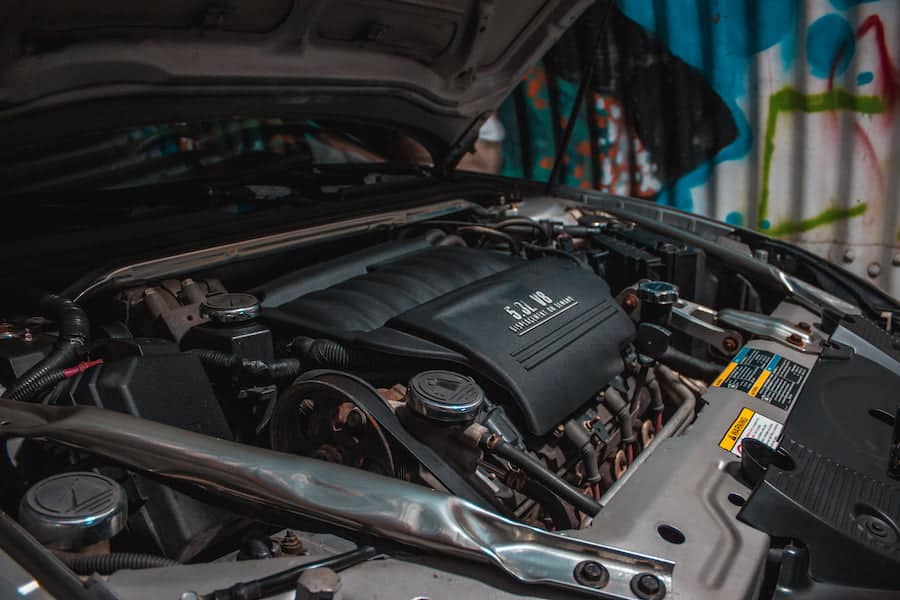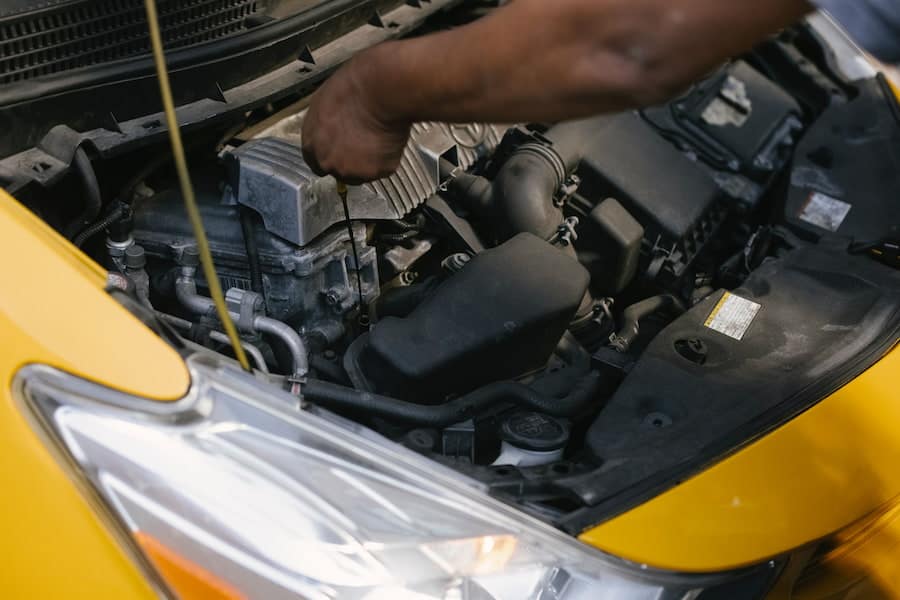As an Amazon Associate we earn from qualifying purchases.
Did you know you can easily clean your car’s radiator using baking soda? Most drivers feel like they need to buy radiator flush products to clean their vehicle’s cooling system. However, you can instead replace your radiator flush products with this cleaning technique that involves baking soda.
As you read on, you will understand how to clean a radiator with baking soda.
Contents
How to Clean a Radiator With Baking Soda
The baking soda technique is the cheapest way to clean your vehicle’s radiator. Baking soda is a popular household ingredient that is always available in most stores. Unlike radiator flush products with strong reactive chemicals, baking soda is safer for you and your engine.

Regular car maintenance is a necessity if you want to ensure that your vehicle maintains its functionality comparable to when you first purchased it. A crucial part of car maintenance involves cleaning the car’s radiator to prevent blockage. Radiator cleaning may turn out pretty easy and even fun to carry out if you follow these simple guidelines we have put together for you.
Observe Safety
This first step is a necessary precaution to maintain your safety when coming into contact with the radiator chemicals. It is best to wear rubber gloves to protect your hands from any spillages. Safety goggles are also required to shield your eyes from any fluid that may project onto your eyes when cleaning the radiator.
Stop the Car and Allow to Cool
You should ensure that you turn off your engine and allow the car to cool before opening the radiator valve. Plenty of severe burn risks are associated with radiator valves, so removing the radiator valve when the vehicle is hot is not advisable. The coolant in radiators can be at temperatures as high as 250 degrees Fahrenheit and under a lot of pressure.
Lifting the car’s hood when the vehicle has not cooled can injure your face or body and cause severe burns if the hot coolant comes into contact with your skin. Once your car is cool, proceed to remove the thermostat valve because baking soda may attach itself to this device and cause it to malfunction in regulating the engine’s temperature.

Empty the Radiator
Open the bleed valve of the radiator and allow for the radiator fluid to bleed out. Please ensure the radiator is drained empty before proceeding to add the cleaning solution.
The coolant hose that would normally attach to the housing needs to be left off and pointed downward because this is where the old fluid and flushed water will be coming out. Remember to use a wide bucket under the radiator to drain the coolant fluid and debris from the radiator’s bleed valve.
Prepare the Baking Powder and Alcohol Solution
Traditionally, you add five tablespoons of baking soda to one liter of water. Mix the substances until they form a solution with no air pockets. Your baking soda solution is ready if you have diligently stirred it and there are no lumps in the solution.
However, a baking soda and vinegar solution offers better cleaning properties due to the acidic properties of vinegar.
Add the Cleaning Solution to Radiator
When adding the solution to the radiator, you may notice foaming. This fizzing indicates the solution is already reacting with the impurities, such as rust and other radiator deposits.
Close the radiator’s valve and turn the car’s engine on. Press on the accelerator to increase the engine’s temperature to make the solution react faster using heat as a catalyst. The solution reacts with the impurities and unclogs the radiator pores while cleaning and smoothening the radiator’s walls by removing any unwanted particles attached to the walls.
Flush the Solution
After allowing the solution to react for some minutes, turn off the car’s engine to allow the vehicle to cool. Once cooling has taken place, remove the bleed valve and drain all the solution from the radiator. You may then flush out the remaining solution by draining distilled water into the radiator’s pipes.
Flush the radiator until you notice clean water draining from the radiator. After putting the bleed valve back in place, you may then proceed to add your coolant of choice to the radiator. Remember to close the radiator’s top valve and adequately shut the hood of your car before driving to your next destination.
How to Clean the Radiator Using a Baking Soda and Vinegar MIX
Preparing baking soda and vinegar concoction involves mixing six tablespoons of baking soda and six tablespoons of vinegar in one liter of water. A baking soda and vinegar mix is an effective solution that you can use to clean your radiator, it can also be used to clean Kilim rugs. The vinegar’s acidic properties allow the vinegar to clean stains in the radiator.
After preparing your baking soda and vinegar mix, you may follow the steps discussed above to clean your radiator. Most mechanics recommend using distilled white vinegar for your radiator. A great benefit of using vinegar is that it removes sludge, calcium, and lime deposits in the radiator.

Importance of Cleaning Your Radiator
Some of the benefits of cleaning a radiator are:
- Cleaning prevents malfunctioning of the cabin heater. The cabin heater of a car sea ends on the heat from the hot coolant from the radiator. A clogged radiator prevents the flow of hot coolant from the radiator to the heater core hence restricting the interior from heating up.
- Cleaning removes rust and scale deposits. Over time, scale deposits and rust build-up within the radiator. Cleaning removes these deposits, which get pushed out with the old antifreeze.
- Cleaning prevents coolant leaks. Rust in clogged radiators may cause the development of holes and cracks in the radiator. The cracks may lead to coolant leakage that forces the engine to operate with insufficient coolant. This situation may lead to engine overheating as well as internal vehicular damage that may require expensive repairs.
It is noteworthy to understand that replacing a radiator is a costly task requiring an average of $880, with standard replacement ranging from $290 to $1120 inclusive of miscellaneous parts and the labor involved.
Conclusion
Frequently using your car without cleaning its radiator may lead to avoidable mishaps, such as a clogged radiator. Some of the signs of a clogged radiator include leaking fluid from underneath the vehicle and an overheating engine, resulting in an awful driving experience.
A blocked radiator prevents the regulation of the car’s temperature that leads to internal damage so ensure you clean your car’s radiator with these simple homemade solutions and drive safely.
